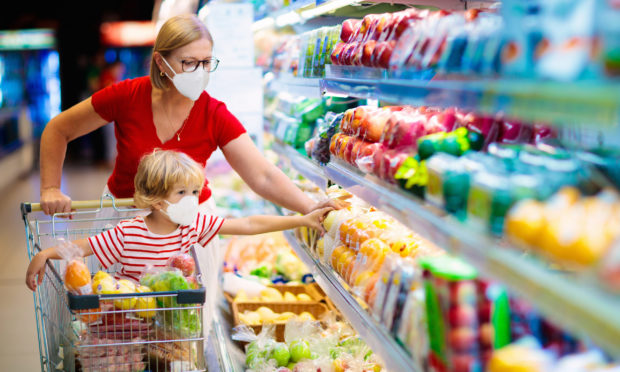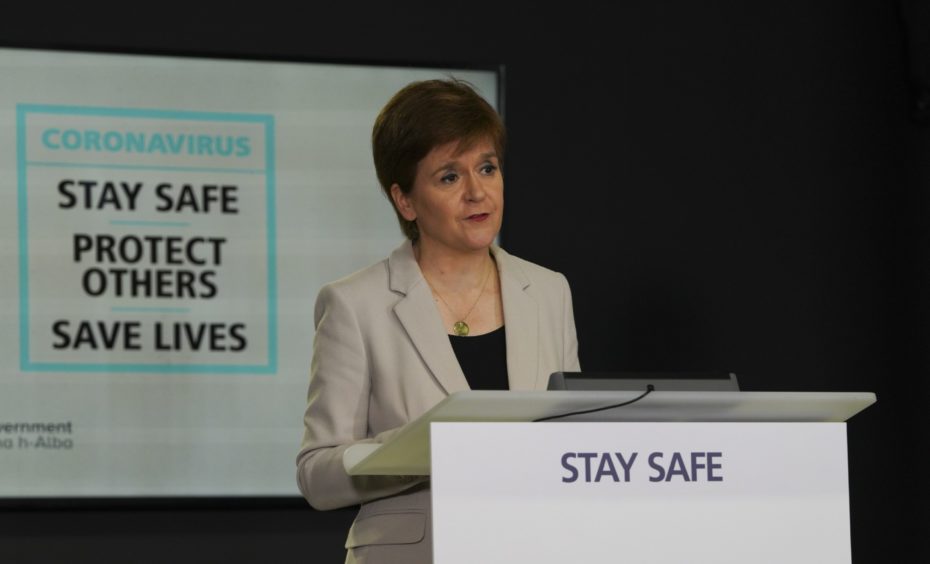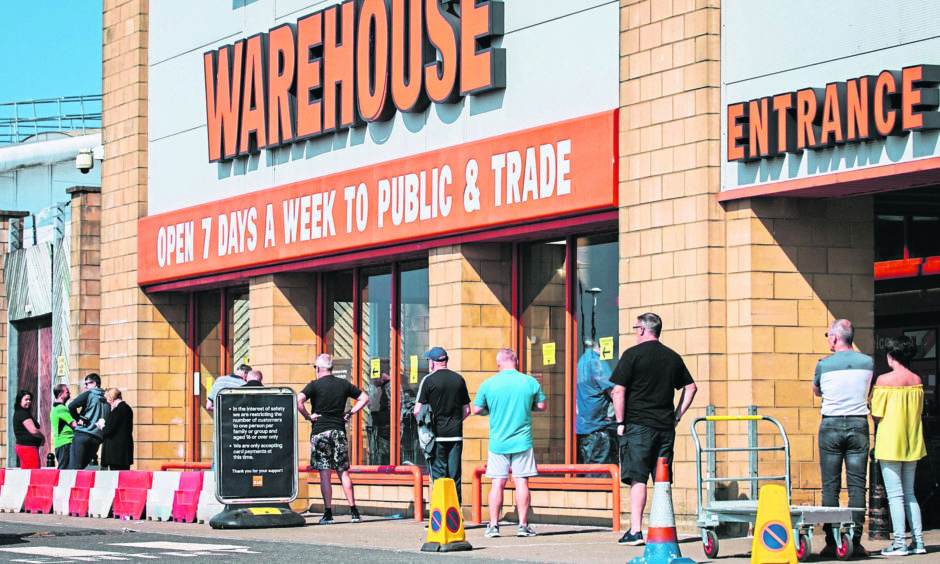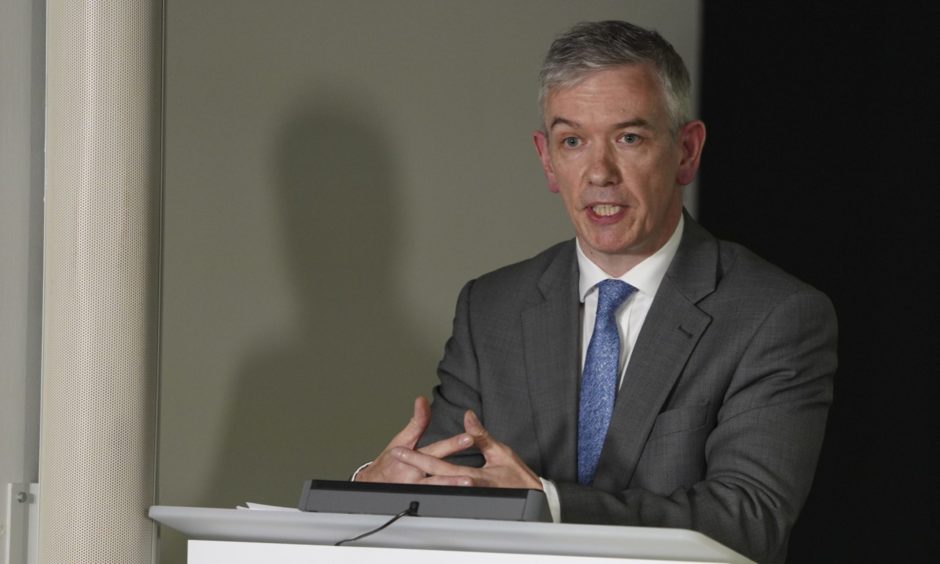Nicola Sturgeon has announced new coronavirus guidelines on compulsory face coverings, giving children more freedom to play with their friends and the easing of physical distancing in shops, pubs, restaurants, trains, buses and ferries.
So what exactly does the new guidance say and when do the new rules come into force?
Mandatory face coverings in shops
For a number of weeks Nicola Sturgeon has been urging the public to wear face coverings when out shopping and they already have to be worn by those travelling by public transport. From July 10 Scotland will become the first UK country to make face coverings compulsory when people enter shops.
The new measure is to be introduced as physical distancing restrictions are eased, on the basis that coverings can reduce the risk of transmissions from people when indoors.
There will be certain exceptions. Those under five will not have to wear them and some people with certain medical conditions will be excused.
The sort of face coverings that the first minister is talking about are not medical or surgical masks. Rather they are made from cloth that allows the wearer to breathe. Reusable face coverings can be bought or DIY ones can even be made at home.
At her daily coronavirus briefing, Ms Sturgeon said failure to wear a face covering could result in a fixed-penalty fine, which starts at £60. More expensive fines can be imposed for repeatedly ignoring the guidance.
Police will be responsible for enforcing the new rule, with Ms Sturgeon acknowledging it would be unreasonable to expect shop staff to enforce it.
Ms Sturgeon said she recognised that it was not the “easiest thing” for police to keep on top of, but added that punishments would be imposed “proportionately and sensibly”.
She urged the public to wear a face covering voluntarily, adding: “It is important, given how important we think it is in the wider scheme of things, to have that backstop of enforcement if necessary. “
Relaxation of physical distancing
Nicola Sturgeon said two-metre social distancing would remain the “benchmark” for the Scottish Government’s test and protect system. Staying at least two metres from others is important for vulnerable people such as the elderly. Not only would it reduce the chance of transmission but make it far less likely an individual is traced as a contact and asked to self-isolate.
However from July 10 – when phase three of the route map out of lockdown is scheduled to come into force -there will be some exceptions.
The two-metre rule is to be reduced to one metre in the retail and hospitality sectors as well as on public transport including island ferries.
Ms Sturgeon said the benefits of staying two metres apart had to be balanced with the “adverse economic impact” the regulation is having on business.
For the distance to be reduced from two metres to one metre, businesses will have to introduce other mitigating measures to prevent the spread of the virus.
For example, shops should introduce mandatory face coverings, as mentioned; one way systems; staggering arrival and departure times of staff; contactless payments; multiple hand sanitation facilities; screens to create a physical barrier between people at tills and increased ventilation.
Pubs and restaurants, when serving indoors and outdoors, will have to get contact details from customers to enable them to be traced if there is an outbreak. Background music will have to be switched off so that people don’t feel the need to shout.
Other measures might include: making sure customers are all seated; staff wear face coverings; clear systems for ordering, paying and use of toilet facilities, screens between seating areas and good ventilation.
On public transport, operators would have to consider: back-to-back or face-to-back seating; enhanced ventilation; Perspex screens and mounted sanitizers, wipes and bins.
Letting the children play
From July 3 new measures will enable children to play with their friends more easily and younger ones will be able to hug their grandparents for the first time since lockdown.
Non-shielding children, aged 11 and under, will no longer be required to maintain physical distancing with other children or adults outdoors.
For those aged between 12 and 17, the two-metre rule stays in place. They can continue to meet in groups outdoors as in existing rules (maximum of three households in the group, no more than eight people in total). However, there is no limit to the number of these groups that the young person can meet in a day providing that each contact aligns with the guidance.
“That means that you can meet different groups of friends at different times of day. And it also means that you won’t be prevented from meeting your friends, just because your parents or carers or your brother or sister happen to be meeting their friends,” Ms Sturgeon said.
Ms Sturgeon said the clinical risks for young children appeared “relatively low” and she wanted to give youngsters the chance to enjoy the summer holidays. Outdoor contact sports for children are scheduled to resume on July 13.
Chief Medical Officer Dr Gregor Smith also announced that restrictions on young people who were shielding would also be lifted. Those able to benefit from the relaxation were likely to be those with diabetes, asthma, epilepsy and kidney disease.
He has written to doctors asking them to identify which children no longer need to shield from the virus. The new guidance should allow them to return to school on August 11.













